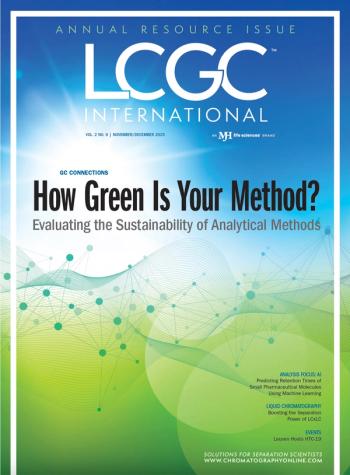
- The Column-07-23-2010
- Volume 6
- Issue 13
The art of chromatography
This summer the National Gallery in London will host an exhibition demonstrating some of the ways that science has been able to shed new light on the history behind some of the Gallery's priceless works of art.
This summer the National Gallery in London will host an exhibition demonstrating some of the ways that science has been able to shed new light on the history behind some of the Gallery’s priceless works of art. The exhibition, Close Examination, is a partnership between the Engineering and Physical Sciences Research Council (EPSRC) and the National Gallery and explores the work of the gallery’s scientific department by presenting the stories behind more than 40 paintings in the collection.
An EPSRC-funded gas chromatography–mass spectrometer (GC–MS) has helped specialists in the gallery’s scientific department study the organic chemistry of old master paintings to understand how paintings were made and how they have changed over time. GC–MS has been used to study the characterization and composition of paint binding media, additions to paint media such as resins and the composition of old varnishes.
Ashok Roy, director of science at the gallery explained some of the challenges the department faces: “Firstly only tiny quantities of material are available for analysis as samples, plus the organic content can be very complex. In addition, these materials have generally changed over time so that analysis may be of degraded materials the results of which have to be translated into assessments of the original chemical composition when the painting was first produced.”
According to the organizers the partnership between the National Gallery and EPSRC highlights the contribution that science and scientists make in the world of art and shows the intellectual value that emerges when scientific and artistic traditions come together.
Articles in this issue
over 15 years ago
GCxGC Symposiumover 15 years ago
Climate of Innovationover 15 years ago
Thought Leaderover 15 years ago
Market Profile: High Content Screeningover 15 years ago
Musings from the Little Black Book of GC (Part 2)over 15 years ago
Peak Integration that Matches the Efficiency Principles of UHPLCNewsletter
Join the global community of analytical scientists who trust LCGC for insights on the latest techniques, trends, and expert solutions in chromatography.



